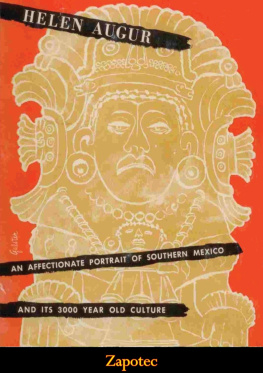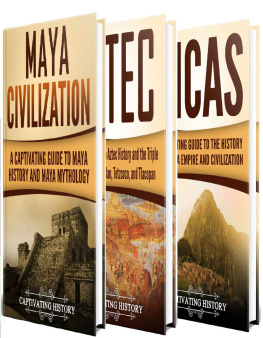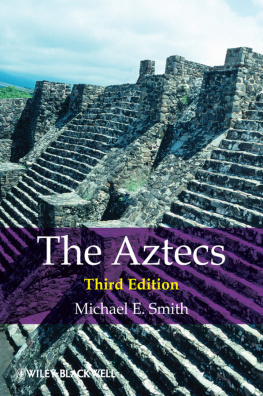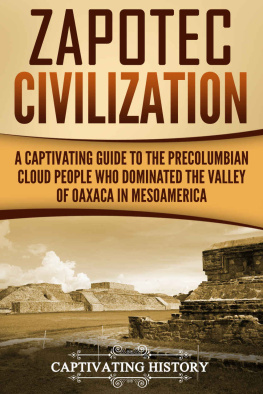

Barakaldo Books 2020, all rights reserved. No part of this publication may be reproduced, stored in a retrieval system or transmitted by any means, electrical, mechanical or otherwise without the written permission of the copyright holder.
Publishers Note
Although in most cases we have retained the Authors original spelling and grammar to authentically reproduce the work of the Author and the original intent of such material, some additional notes and clarifications have been added for the modern readers benefit.
We have also made every effort to include all maps and illustrations of the original edition the limitations of formatting do not allow of including larger maps, we will upload as many of these maps as possible.
ZAPOTEC
HELEN AUGUR
Table of Contents
Contents
DEDICATION
For the GilbertsSue, Ben, and Susan
LIST OF ILLUSTRATIONS
1. Oxcart on the old Camino Real
2. Girls returning from church festival
3. Stormy sunset, Tehuantepec
4. The Etla market
5. Mazatec women
6. Fording summer-flooded river near Oaxaca
7. Mitla women beside organ cactus fence
8. The Ocotln market
9. Plume Dancers
10. Isthmus women at a fiesta
11. Monte Albn observatory
12. Four mysterious Dancers
13. Preclassic Zapotec
14. Clay figures of the Classic period
15. Corn god above Tomb 104
16. Stone-mosaic interior walls
17. Grand staircase of temple pyramid
18. Old Dominican church
19. Faade of Santo Domingo
20 Ornate walls and ceilings of Santo Domingo
21. Serape weavers
22. Village market
23. Woman potter at work
24. Adis...
MAPS: Southern Mexico today ( frontispiece )
Southern Mexico and Guatemala during Classic Era
PRONUNCIATION OF NAMES
Except for Indian place names, which follow various rules, readers familiar with Spanish do not need this table. For those who do not speak Spanish, the important thing is to pronounce the vowels distinctly; they always have the same sound: a, ah ; e, ay (as in day ); i, ee ; o, oh ; u, u (as in bull ). The consonants which give trouble are: j, pronounced like h ; ll, like y ; , like ny , and x, which may have a z or h sound, depending on the origin of the word. Place names ending in an or al are usually accented on the last syllable.
cacique,kah-SEE-kay
campesino,kahm-pay-SEEN-oh
Chiapas,chee-AH-pahs
Cocijo,koh-SEE-hoh
Cocijoeza,koh-see-hoh-AY-zah
Guelatao,guel-ah-TAH-oh
Huave,whoo-AH-vay
huipil,whoo-ee-PEEL
istmeo,eest-MAYN-yoh
Ixtln de Jurez,eest-LAHN day who-AHR-z
Juchitn,hooch-ee-THAN
Miahuatlan,mee-ah-hoo-out-LAN
Mitla,MEET-lah
Mixe,MEE-hay
Mixtec,MEEZ-teck
Monte Albn,mohn-tay ahl-BAHN
Oaxaca,wah-HAH-kah
Oaxaqueo,wah-hah-KAYN-yo
Papalopan,papa-loh-AH-pahn
Quetzalcoatl,KWET-zahl-coh-ahtl
Tajn,tah-HEEN
tehuana,tay-HOOAN-ah
Tehuantepec,tay-hooan-tay-PECK
Tenochtitln,ten-oak-teet-LAHN
Teotihuacn,tay-oh-tee-whah-KAHN
Teotitln del Valle,tay-oh-teet-LAHN del VAL-yay
vallista,vai YEES-tah
Xaquia,sah-KEE-ah
Xipe Totec,SHEEP-ay toh-TECK
Xochicalco,soch-ee-CAHL-coh
Yalalag,yah-LA-la
zapote,zah-POH-tay
Zapotec,ZAH-poh-teck
Zempoaltepec,zem-poh-AHL-tay-peck
PART ONE
I SO TEMPERATE AN AIR
In the center of Oaxaca there are three great valleys that flow together below the pyramids of Monte Albn. For beauty it is hard to choose among them; whichever one you happen to see first will capture you in its own way. You are never prepared for your first moments in this land, because it has been described to you in visual terms, and its first impact is on other senses.
If you happen to arrive by plane you will come down from a wilderness of mountains into the Valley of Oaxaca. With your first breath you realize that the air is fragrant; breathing is like drinking Rhine wine. On either side the fields stretch unbroken to purple ranges of the Sierra Madre del Sur, but you are not yet registering a mental picture. The forgotten pleasure of breathing is followed by one even rarer in this crowded worldthe recognition that you are in a landscape with the right dimensions. A valley must be of certain proportions or one feels hemmed in. This one is so balanced that it opens out and out like the gateway to the Promised Land, and indeed it leads to the sumptuous Isthmus and the Pacific.
These first sensations, of air delicious on the palate and the skin, and of a land perfectly scaled to people, are a good introduction to Oaxaca and to the Oaxaqueos themselves. They too have a light, cool touch and an ingrained sense of proportion. Two centuries ago Thomas Gage traveled through Guatemala and all Mexico, only to write:
Oaxaca is of so temperate an air, so abounding in fruits, and all provision requisite for mans life, so commodiously situated between the North and South Seathat no place I so much desired to live in whilst I was in those parts as Oaxaca.
Perhaps he meant by all provision requisite for mans life something more than corn and fruits, for in the Valley of Oaxaca among the Zapotecs one begins to learn in what their daily bread consists. They are perhaps the oldest people of gentle breeding on this continent, a marvel of survival, and it is worthwhile to learn what things they have chosen to keep, and what has kept them whole, through three millenniums in this valley.
THE LITTLE PRAYERS
We were to spend New Years Eve in Mitla, at the far end of the valley, and we started out in the late afternoon, when the mountains are an intense purple and a blue mist lies along their base. For this alone I would have come back to Oaxaca, to see that blue smoke roll along the valleys edge.
Near the city the plain is broad and pastoral. Fields of castor bean, corn, alfalfa ripple past; the villages lie well off the Inter-American Highway, islands of dense verdure with the twin towers of an old Dominican church just topping the trees. Oxen pulling tall-sided carts heaped with bamboo drowse along the Camino Real that skirts the Highway, and a little campesino drives his animals home from pasture, goats, burros, sheep, and cows all herded together.
Gradually a note of fantasy comes into this pastoral quiet. The mountains draw closer, sending out spurs and grotesque peaks, every one with its name and legend. The plain is broken by odd cone-shaped hills, some of them not hills at all but the muffled shapes of pyramids which once bore the palaces and temples of Zapotec kings. A lake covered the valley floor then, and the monarchs were rowed from their seat in Teotitln del Valle to the festivals on Monte Albn.
This valley has always been the great artery of Zapotec life, running from the sacred mountain of Albn to the holy city of Mitla, the entrance to the underworld where the dead go to join their gods. Mitla lies in a region of limestone caves, many of them enchanted still, and as among most old peoples, caves mean the beginning and the end of life. Mitla was the supreme cavern, and under its exquisite temples kings and high priests were buried in the centuries before the Conquest.
There is a cave in a hillside not far away which may belong to a more ancient time when the Zapotecs worshiped the earth jaguar and a cave meant his open mouth from which mankind sprang and into which all men returned at death. When the Dominican missionaries arrived this hillside cave was an important shrine in which the people sacrificed turkeys amid clouds of copal incense. With their policy of preserving pagan sites and changing only the objects of worship, the friars erected a cross before the magic cave. The Zapotecs tore it down, and the friars set up a second cross farther down the slope. This was allowed to remain, and those Indians who prayed to it found their prayers answered. They began to revere it as miraculous and named it the Cross of Petitions.
Next page









